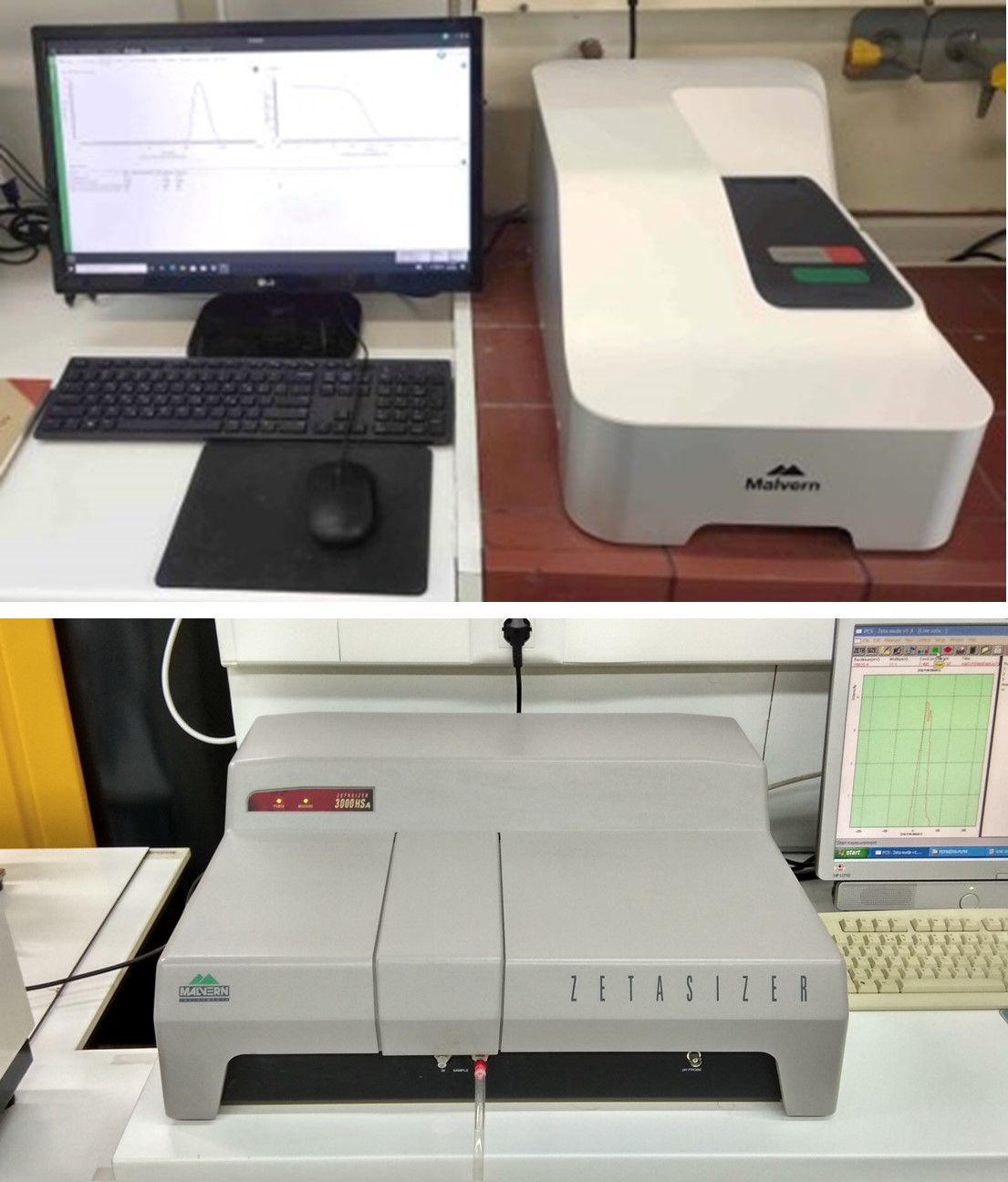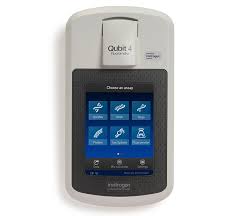
Physicochemical Characterization of Nanoparticles
The physicochemical properties of particles and nanoparticles are the basic criteria for the evaluation of their quality and future applications. The size (hydrodynamic diameter), polydispersity and z-potential of particles down to the scale of a few nanometers are evaluated through Dynamic and Electrophoretic Light Scattering (DLS and ELS), by utilizing a Malvern Zetasizer 3000 HSa particle sizer or Photon Correlation Spectometer (PCS) and a new Malvern Zetasizer ZSU3105. Analysis is carried out by the CONTIN method (Malvern software) and ZS XPLORER (Malvern software) accordingly. The method is also appropriate for measuring the time-dependent physical/colloidal stability of various nanosystems.

Thermal Analysis of Formulations and Biomaterials
Thermal analysis techniques are essential elements for both the academia and the industry. A very important application of thermal analysis is Differential Scanning Calorimetry (DSC). DSC allows for the quantification of parameters that are considered of paramount importance in ensuring the quality and stability of pharmaceutical, nutraceutical and cosmeceutical formulations. DSC knows a wide range of applications in many scientific and industrial fields. DSC experiments are carried out using a Mettler-Toledo DSC822e calorimeter and analysis is achieved through the Mettler-Toledo STARe software.

Lyophilization of Pharmaceutical Formulations
Pharmaceutical and other formulations that are in liquid form or contain high levels of humidity need to be lyophilized to ensure their stability over time. Through lyophilization, the removal of water molecules is achieved and the product is ready for storage or transfer. Reconstitution of the lyophilized product is an essential property and ideally, the initial characteristics, e.g. particle size and homogeneity, of the formulation should be maintained. Lyophilization is a process of utmost importance for many products that will reach the clinic. It is carried out inside a Telstar Cryodos-50 freeze drier.

Drug Release Studies in Sink Conditions
In order to measure and estimate the in vivo profile of drug release from various formulations, sink conditions, controlled temperature and shaking are imperative elements to simulate the physiological environment of the human body. These can only be applied in a closed system, which must also be accessible for frequent sampling, a prerequisite for building drug release profiles. In vitro drug release studies are studied by utilizing a Memmert shaking water bath.
 Quantification of Formulation-Contained Drugs
Quantification of Formulation-Contained Drugs
The amount of drug molecule or bioactive ingradient present in the pharmaceutical or nutraceutical/cosmeceutical formulation respectively is a parameter of paramount importance for both the academia and industry and defines a product from the moment it is developed, until its approval to enter the market. There are a wide range of methods for determining the %drug content, which depend on the type of formulation and the nature of the molecule. One of these includes the use of an Awareness Technologies Stat Fax 4200 microplate reader. With this tool, molecules that absorb wavelengths in the range of UV-Vis can easily be quantified through spectrophotometry.

Qubit Fluorometric Quantification
The Qubit Fluorescence is a reliable and straightforward method for the quantitative detection of DNA, RNA and proteins. It detects fluorescent dyes that specifically bound to the target molecule, and can distinguish dsDNA from ssDNA or intact from degraded RNA, even in extremely small amounts or in the presence of contaminants.
 Nanotoxicity Studies
Nanotoxicity Studies
A recently emerged issue concerning nanomedicines is their toxicity on the tissue and cellular levels and is the reason why the regulatory mechanisms are in great concern these days about their safety, as well as their efficacy. In vitro toxicity studies have been conducted on pharmaceuticals and other products for very long, but when formulations reach the scale of "nano", the toxic phenomena follow dynamic pathways that may only be investigated through correlation with the above mentioned essential properties, such as particle size, polydispersity and surface charge, but also thermodynamics and morphology. Traditional ways of cell culturing and cell toxicity assays, combined with innovative methods provide an integrated approach on these matters.
